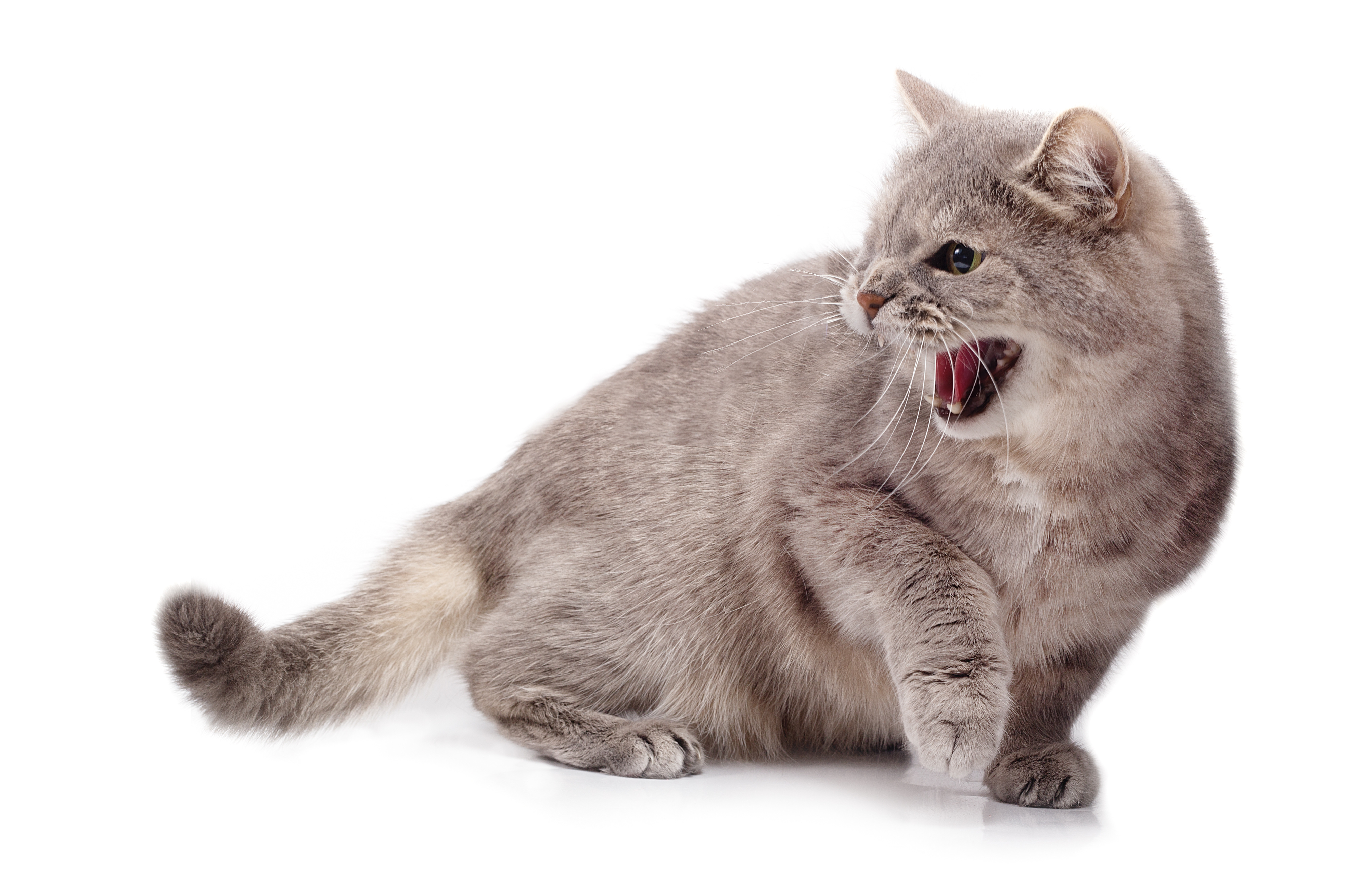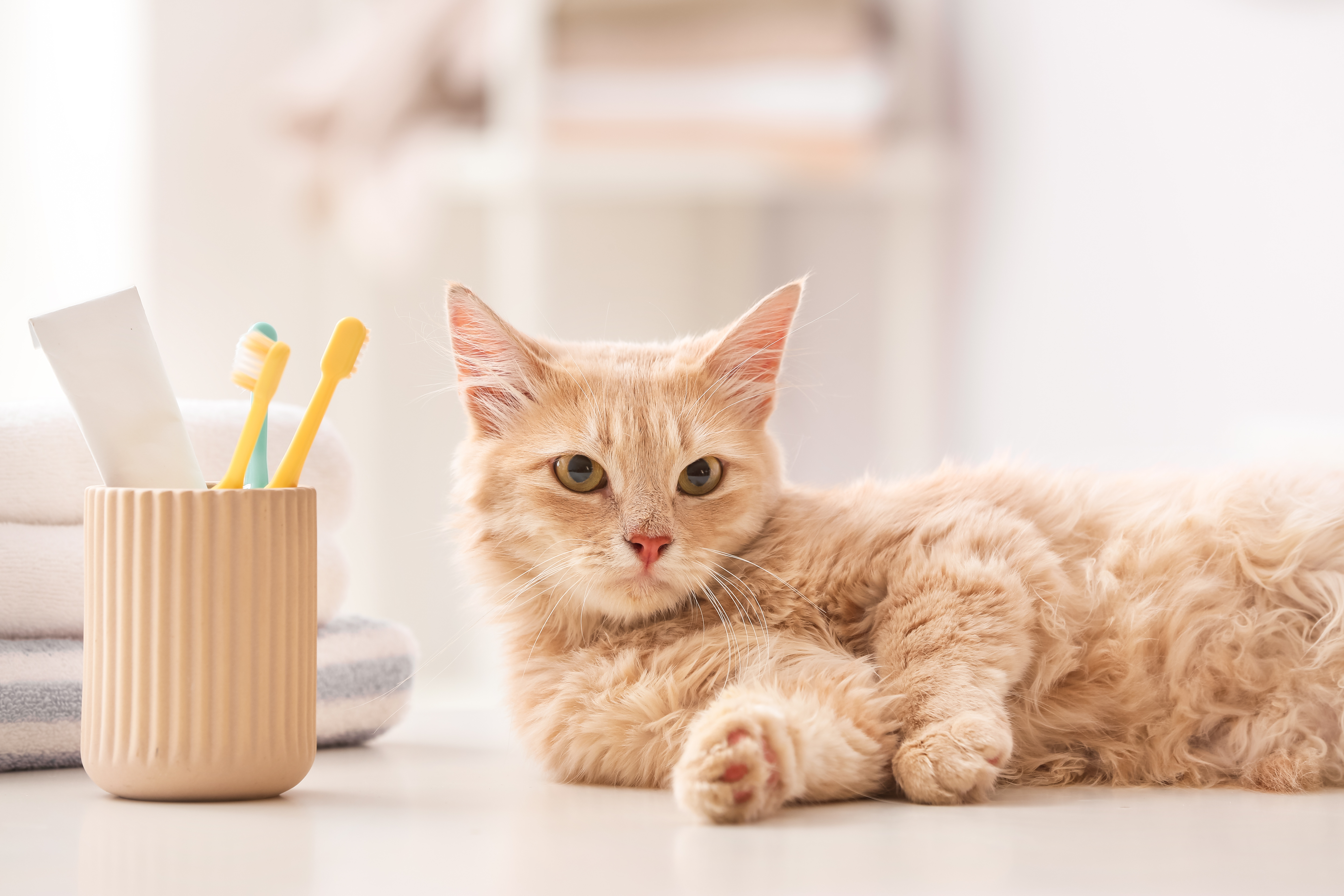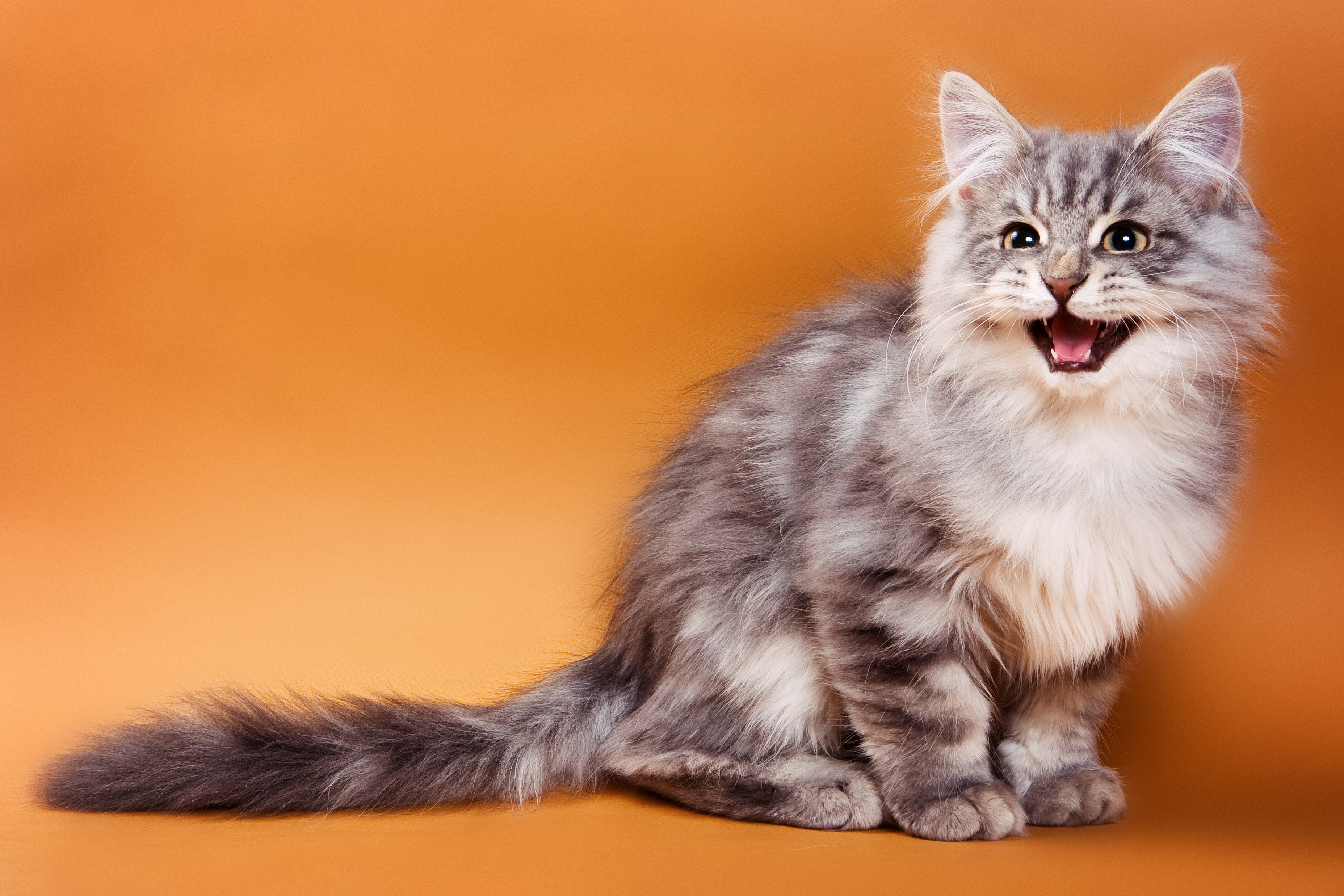
Feline leukemia (FeLV) is a common but dangerous viral condition that seriously affects a cat's life. Here is what you need to know about FeLV and your cat's health.
What It Is
Feline leukemia (also known as FeLV) is a retrovirus that belongs to the oncornavirus subfamily -- it isn't a form of cancer, but rather a cancer-causing virus. FeLV can only affect cats and not humans or other animals.
Feline leukemia suppresses a cat's immune system and increases the likelihood that they will develop cancer, blood disorders, or secondary illnesses. This organism can replicate itself in various living cells of the cat's immune system and blood-forming tissues, leading to cell mutation or death, infecting the bone marrow (which can release infected cells), potentially becoming cancerous, and eventually shedding the virus into the environment.
Cancer can occur in organs and tissues and tumors can form at one or more parts of the body. Common conditions caused by FeLV include leukemia, lymphoma, and infertility. Other diseases and issues can occur, including severe anemia, neurological diseases, ocular disease, enteritis, and more.
There are multiple factors that ultimately determine how FeLV affects the cat's health. Kittens have a much harder time with the virus than adult cats. While over 50% of cats infected with FeLV die within the 1-3 years of diagnosis, there are cats that can go on to live long and happy lives -- 10-15 years -- if they are diagnosed as an adult.
2-3% of cats in the US can contract feline leukemia, and while that may seem like such a small number, it can jump from one cat to the next quite easily.
Feline leukemia is spread through close contact (grooming, mating, fighting, and rarely through sharing litter boxes and bowls) and bodily fluids such as saliva, blood, tears, feces, and urine. While it's very contagious, the virus can't live very long outside the body, and not every cat who is exposed to FeLV will become infected; in fact, around 30% of cats are able to get rid of the infection.
Cats can contract the virus at birth if their mother is infected, being groomed by their mother, or through direct contact with FeLV-positive cats. Many of these kittens will die before or after birth but some can survive while remaining infected. Outdoor cats and cats who live in colonies are at a higher risk of contracting FeLV.
Cats who contract FeLV may not show symptoms for a while, so it's important to always take your cat to the veterinarian on a regular basis.
FeLV has several subgroups:
- FeLV-A, which is transmitted from cat to cat. Some cats may only carry this type while others may have a combination.
- FeLV-B, which can lead to the development of abnormal tissue and/or tumors.
- FeLV-C can cause severe anemia.
- FeLV-T results in a suppressed immune system.
Symptoms
Feline leukemia is not always obvious. Cats may not show any initial symptoms but can suddenly develop serious issues in the following weeks, months, or years, with some periods of good health followed by periods of extreme illness.
Symptoms of feline leukemia could include some or all include:
- Anemia
- Lethargy
- Fever
- Chronic or reocurring infections of the skin, outer ears, urinary tract, or upper respiratory tract
- Diarrhea
- Difficulty standing or walking, and uncoordinated movement
- Generalized weakness
- Poor coat condition
- Neurological conditions and behavioral changes
- Tumors
- Seizures
- Swollen lymph nodes
- Weight loss or rapid weight change
- Unusual breathing
- Pale, inflamed, and/or bloody gums or mouth tissue (gingivitis/stomatitis)
- Yellow color around the mouth and whites of the eyes
- Inflammation of the nose, cornea, or moist tissues of the eye
- Development of lymphoma, which is the most common FeLV-related cancer
- Fibrosarcomas, a cancer that develops from fibrous tissue
Diagnosis
Two types of blood tests are done to test for feline leukemia and both are usually necessary to get accurate results.
The ELISA (enzyme-linked immunosorbent assay) test can determine whether a cat is infected with FeLV but not the stage, so another test needs to be done to confirm it.
A positive on a Snap can mean that your cat was recently exposed but the virus hasn't gotten into the bone marrow so they are fighting it off; it could also mean that they are infected.
However, keep in mind that false positives and negatives are possible and further testing is usually required. It can take up to 30 days (or more) for a cat to test postive for FeLV antigens after infection. Your cat should have a second test administered after around a month to double-check the results, whether your cat has tested positive or negative.
Kittens under 6 months who receive a positive FeLV infection should be retested when they are older and have weaned (8 to 12 months of age) since they may receive antibodies that are passed to them from their infected mothers while nursing.
Prevention
Prevention is the most important method to protect your kitty from. The FeLV vaccine can decrease the risk of contracting the virus, although it is not 100% effective, nor will it do anything if your cat is already infected. The best way to prevent FeLV is to prevent exposure to infected cats.
Talk to your veterinarian about whether vaccination is the right decision for your cat, especially if they have exposure to other cats. If your cat goes outdoors frequently and interacts with other cats, they will be at a higher risk of contracting FeLV. However, indoor cats who have no contact with others may not need it.
Spaying and neutering your pet is important for a number of reasons, but it can also reduce biting behavior during biting or mating, along with transmission from mother to kittens, which can also reduce the spread of feline leukemia.
If you allow your cat to go outdoors, make sure it's supervised or in a secure, enclosed area.
The FeLV vaccine requires two initial injections, along with oosters to keep future immunity. Cats should be tested for FeLV before vaccination. Veterinarians recommend kittens are vaccinated, regardless of their lifestyle.
Vaccines can add up, but pet insurance can cover the costs of vaccines so you won't have to pay the costs out of pocket. We like providers like Pumpkin and [Embrace/pet-insurance/reviews/embrace], who cover diagnostic tests and advanced care.
Treatment & Management

FeLV is not an automatic death sentence, but there will be challenges. Cats who are positive for feline leukemia will need special treatment and additional veterinary care due to their weakened immune system.
FeLV-positive cats should be housed separately from other cats unless their housemates are also FeLV-positive. However, they can live with animals from other species since feline leukemia is only transmittable to cats.
Be sure to keep your cat indoors to prevent the spread of FeLV to any outdoor cats.
Unfortunately, there is no cure for feline leukemia. Cats may be able to live fulfilling lives, but ultimately, their life span will be shortened or affected by the illness; there is no way to know how your cat will be affected. However, you can take some steps to help manage their illness and prolong their life.
- Take your kitty to veterinary checkups regularly
- Make sure you make a veterinary appointment if your cat shows signs of illness to get any secondary infections -- bacterial, parasitic, or viral -- under control
- Keep them current on vaccines
- Make sure they undergo the required but necessary procedures (such as deworming)
- Feed them nutritious and healthy food (make sure you consult with your veterinarian for your cat's best options) and avoid eggs, raw meat, and unpasteurized dairy products to prevent any further infections
- Minimize their stress, keep them comfortable, and shower them with affection and new toys
- Ask your veterinarian and local cat groups for support and advice on how to care for FeLV-positive cats
What are the initial signs of feline leukemia?
Some symptoms of FeLV can include:
- Loss of appetite
- Weight loss
- Enlarged lymph nodes
- Persistent fever
- Pale gums and mucus membranes
- Inflammation of gums (gingivitis)
- Inflammation of mouth (stomatitis)
- Poor coat condition
- Skin infections
- Urinary bladder infections
- Infection of the upper respiratory tract
Can a cat with FeLV be around other cats?
It's generally recommended that socialized cats live with other FeLV-positive cats. Cats with FeLV can shed the virus through close contact and bodily fluids such as saliva, nasal secretions, urine, and feces. However, it does not live for very long outside the body and can only be transmitted to other cats.
Edited by:
Bryan Huynh
•
Product Tester & Writer
























